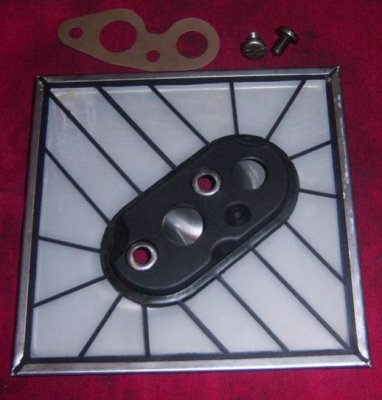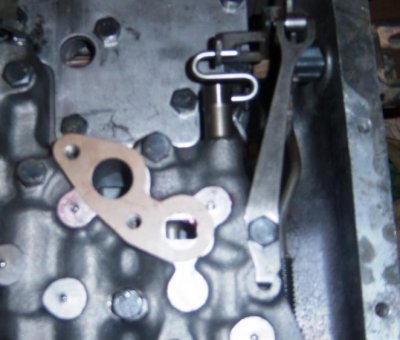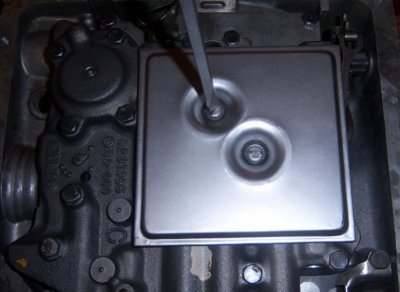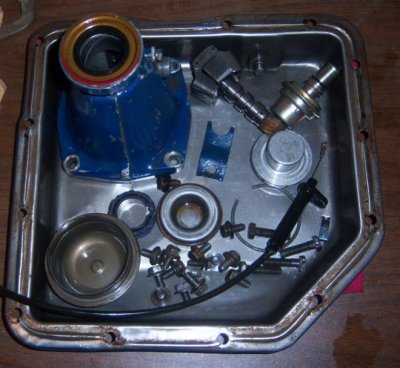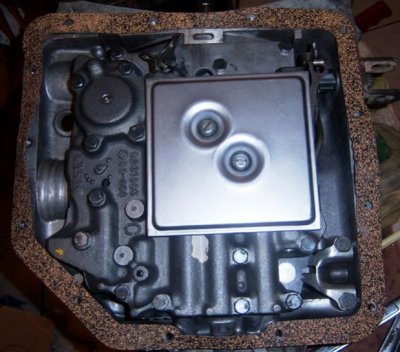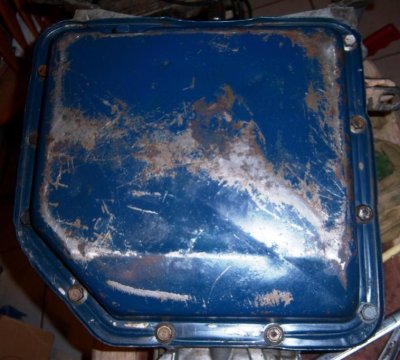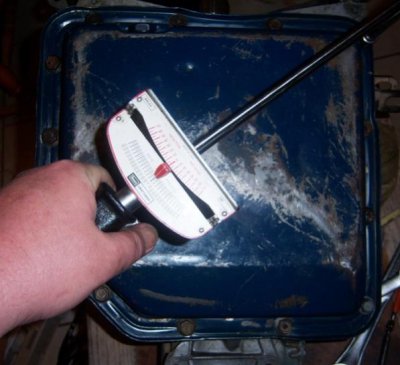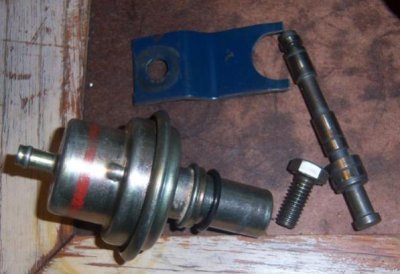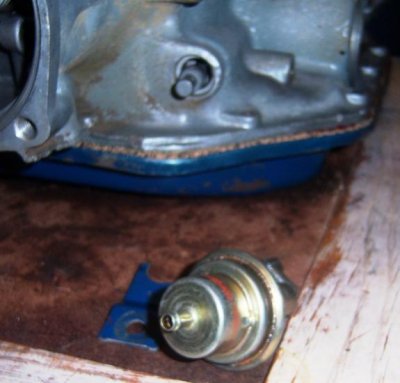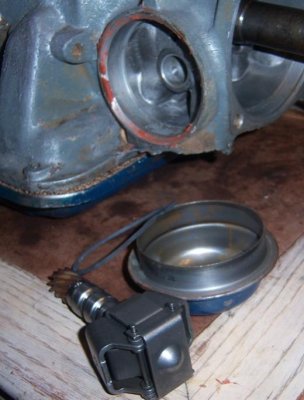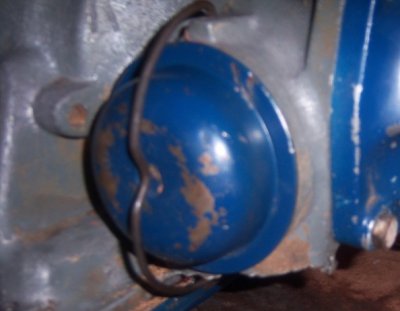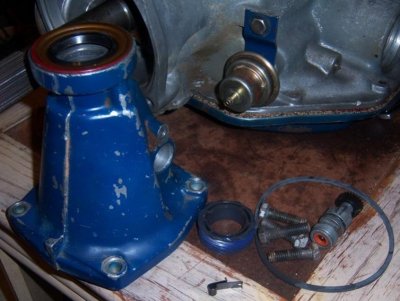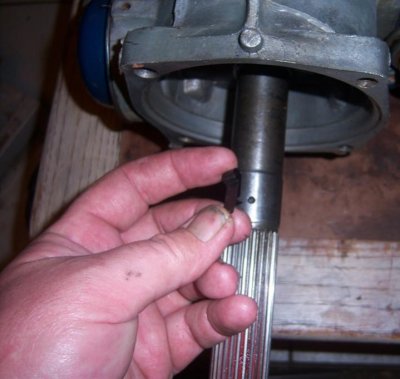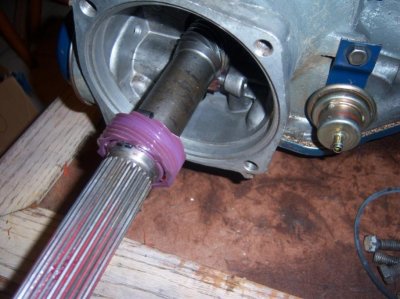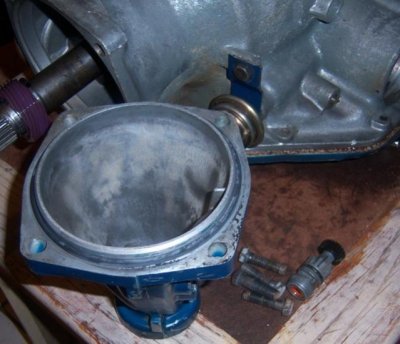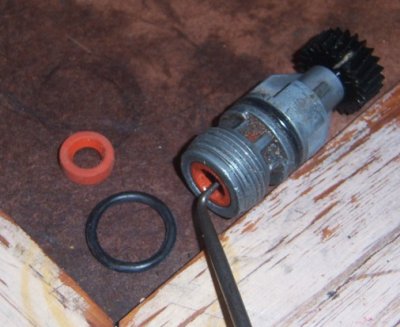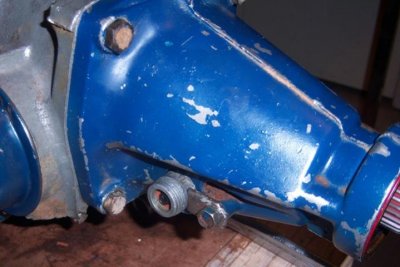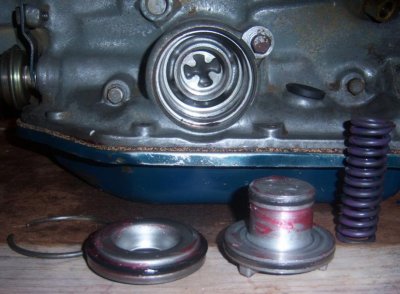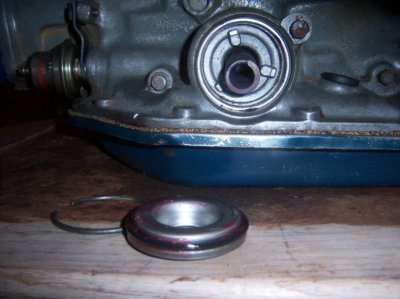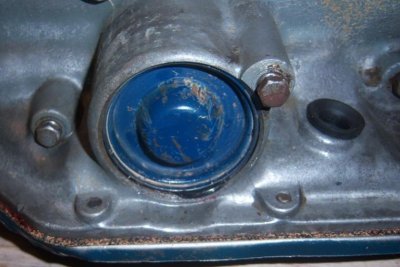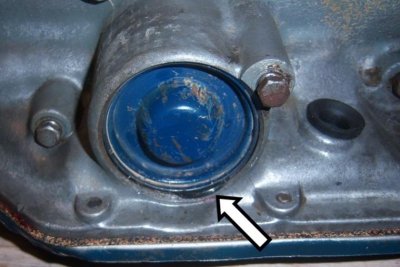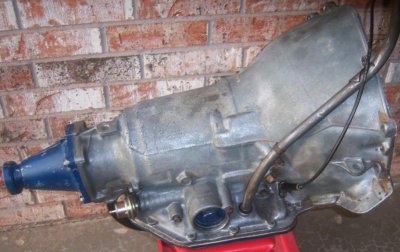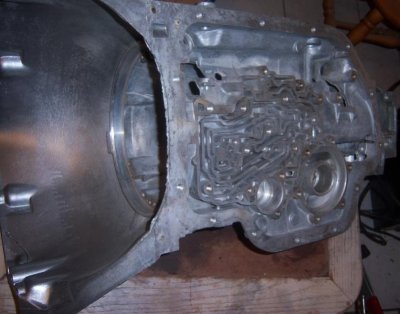- Joined
- Aug 29, 2010
- Posts
- 47,014
- Reaction score
- 9,014
- Location
- OKC, OK
- First Name
- HotRod
- Truck Year
- 85 K20 LWB
- Truck Model
- Silverado
- Engine Size
- 454 - Turbo 400 - 3.73
Dab some TransJel in several spots on the valve body channels of the case. Doesn't need to be in globs. Just enough to keep the gasket in place and from moving around.

Now set the seperator plate over the case gasket. If you don't wish to hold it in place like I have here, you can start 2-3 valve bolts to hold it in place while you move onto the next step/

With the case gasket and seperator plate held in place, put the valve body gasket and support plate in position and start all the support plate bolts. Do not snug or tigheten them. Just getting them started is good enough to hold all pieces in place. You need to leave them loose for the next step.

If you put the 2-3 bolts in the valve body area to hold the gaskets in place, remove them now that the support plate bolts will hold them in place. Put the manual valve and S clip in the valve body. While connecting the S link to the manual linkage, set the valve body over the gasket and start all the valve body bolts with exception of the detent spring and roller retaining bolt. You want to save that one til last because the valve body is slightly raised at the accumulator at this point until you have the vavle body snugged to hold the valve body flat. You don't want to force any of these valve body or support plate bolts at all. If they are the least crossed or not straight, they can easily strip the threads from the alluminun case, and then you have another HeliCoil situation. Now that all the bolts but the one are started and snugged, you put the detent spring and roller on the manual linkage. While pushing down on the spring, hand snug the bolt.

Now that all your support plate and valve body bolts are snugged in place and you feel confident all the gaskets, plates and valve body are in their proper position, torque the bolts to spec of 13ft lbs. I torque them to just over 150 inch lbs with the cheap bar type torque wrench. If any of the bolts give way and do not hold 150in lb, then they have stripped and you will have to HeliCoil those bolt holes just as I had to do on the front pump. Provided you have the linkage assembly installed properly, it should not look like this below.

Now set the seperator plate over the case gasket. If you don't wish to hold it in place like I have here, you can start 2-3 valve bolts to hold it in place while you move onto the next step/
With the case gasket and seperator plate held in place, put the valve body gasket and support plate in position and start all the support plate bolts. Do not snug or tigheten them. Just getting them started is good enough to hold all pieces in place. You need to leave them loose for the next step.
If you put the 2-3 bolts in the valve body area to hold the gaskets in place, remove them now that the support plate bolts will hold them in place. Put the manual valve and S clip in the valve body. While connecting the S link to the manual linkage, set the valve body over the gasket and start all the valve body bolts with exception of the detent spring and roller retaining bolt. You want to save that one til last because the valve body is slightly raised at the accumulator at this point until you have the vavle body snugged to hold the valve body flat. You don't want to force any of these valve body or support plate bolts at all. If they are the least crossed or not straight, they can easily strip the threads from the alluminun case, and then you have another HeliCoil situation. Now that all the bolts but the one are started and snugged, you put the detent spring and roller on the manual linkage. While pushing down on the spring, hand snug the bolt.
Now that all your support plate and valve body bolts are snugged in place and you feel confident all the gaskets, plates and valve body are in their proper position, torque the bolts to spec of 13ft lbs. I torque them to just over 150 inch lbs with the cheap bar type torque wrench. If any of the bolts give way and do not hold 150in lb, then they have stripped and you will have to HeliCoil those bolt holes just as I had to do on the front pump. Provided you have the linkage assembly installed properly, it should not look like this below.
You must be registered for see images attach
You must be registered for see images attach
You must be registered for see images attach
You must be registered for see images attach
You must be registered for see images attach
Last edited:


